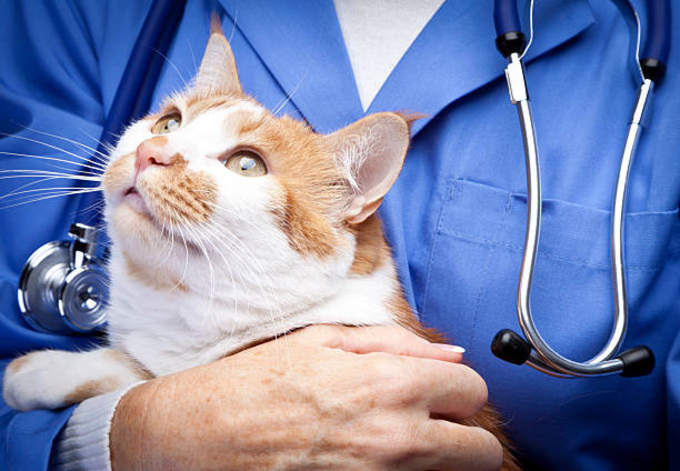 When your cat comes down with an illness, it can be a frustrating experience, because you really don’t know what’s wrong. It’s also stressful for the cat, because he doesn’t understand why he feels so lousy. This creates a tense situation for both the cat and the pet owner, which is complicated by the unfamiliar surroundings of a vet visit. Fortunately, there are a few things you can do to ease the situation and help your cat receive a more thorough examination.
When your cat comes down with an illness, it can be a frustrating experience, because you really don’t know what’s wrong. It’s also stressful for the cat, because he doesn’t understand why he feels so lousy. This creates a tense situation for both the cat and the pet owner, which is complicated by the unfamiliar surroundings of a vet visit. Fortunately, there are a few things you can do to ease the situation and help your cat receive a more thorough examination.
Your vet will likely be experienced in performing low stress handling techniques, when examining your cat. Even so, you can begin easing your cat’s nerves, before the vet visit even becomes necessary. Start by getting him used to his cat carrier. If you only use the carrier, when you go to the vet, your cat will associate the carrier with unpleasant vet visits.
Make the carrier a comfortable, pleasant place by filling it with a soft blanket and the cat’s favorite toys. If the cat goes there of his own will to relax, it will be easier to get him into the carrier for travel. You might also try leaving treats in the carrier to help coax the cat to go inside and get used to it.
On the way to the vet, limit external stimulation by covering the carrier with a blanket. By limiting what the pet can see, the drive to the vet’s office will be less stressful for the animal. Additionally, they won’t see the vet’s building, which would otherwise become familiar to the cat and cause him to panic.
In some cases, the cat may become agitated, while sitting in the waiting area of the office, or clinic. By the time it’s your cat’s turn with the vet, he may already be in an excited state. To avoid this, ask the staff if you can wait in your car with the cat, until it’s your turn. Once a staff member notifies you that the vet is ready for your appointment, you can go directly into the waiting room.
No matter what you do, your cat will still experience a certain level of anxiety. However, a compassionate vet will know how to alleviate much of that stress, while handling your cat. Together, you and the vet will be able to calm the cat enough, so he can receive a thorough examination and receive the treatment he needs.